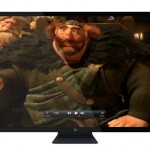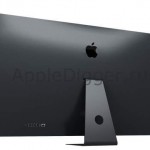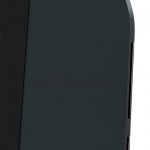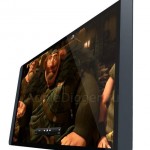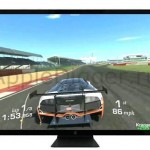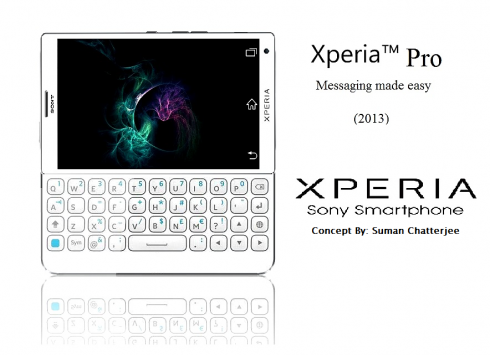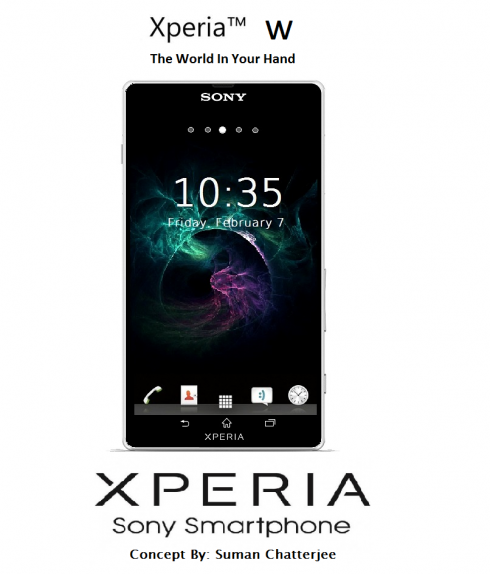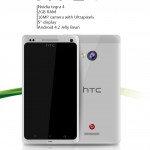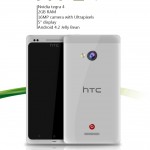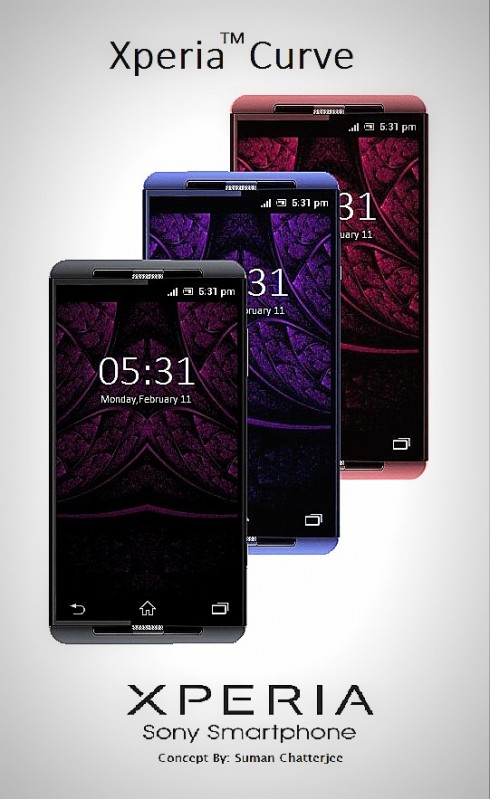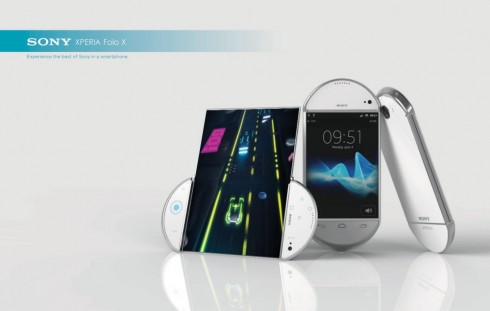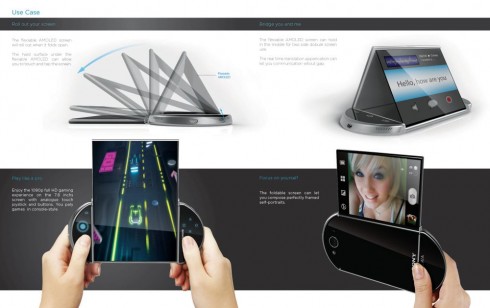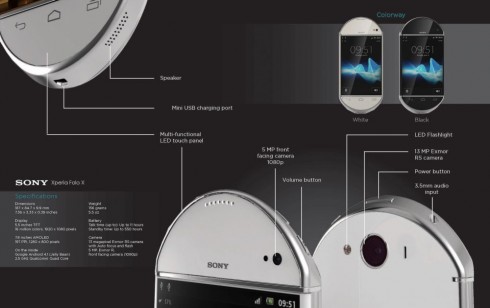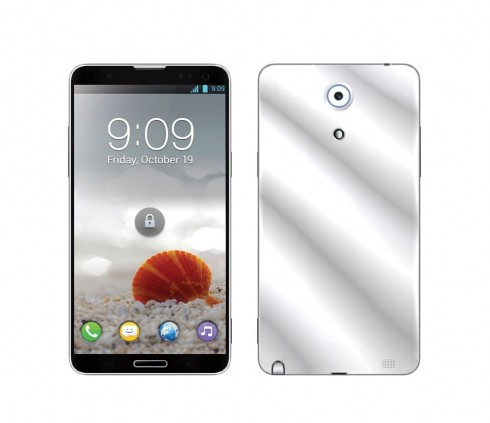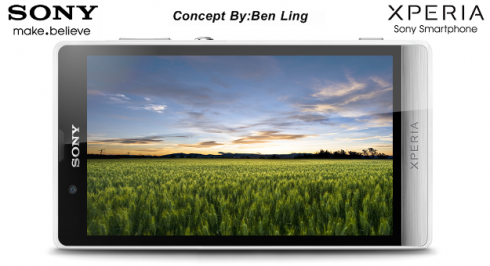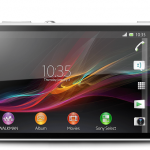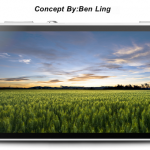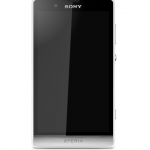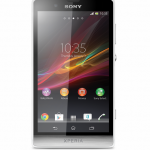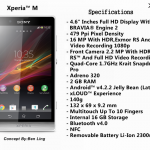Archive for 18 Feb 2013
New Apple TV Set Concept, the iTV Envisioned by Appledigger From Russia (Video)
Over the past years there has been an impressive number of rumors
saying that Apple will release a television set, but we’ve only seen the
Apple TV set top box coming to life so far. The folks of Appledigger.ru
have decided to come up with a concept of the Apple iTV, that’s shown
in the pictures and video below.
There’s no liquid plasma, no transparent screens, only existing technologies. The inspiration for the iTV is the 2012 iMac, the latest generation available, as well as the iPhone 5, plus the Apple TV. The case uses anodized aluminum, the TV is painted black and it’s only available in this color choice. It’s supposed to have 3 versions with different displays: 30 inches, 41 inches and 50 inches. Incorporated into the device we find a FaceTime HD camera for videocalls and at the top there’s a dual stereo microphone.
On the back we’ve got an audio jack, Ethernet, Thunderbolt, 4 USB 3.0 ports and under the glass logo there’s a WiFi antenna. At the ends of the Apple iTV here are two sets of holes, used to disperse heat, that’s known to rise. The device can connect via wireless to the iPhone, iPad or iPod Touch, which you can use as controllers for it. There’s also support for Bluetooth connections to third party joysticks for gaming. The video below makes me think that this Apple television looks a bit like a modern iPad, for some reason…
There’s no liquid plasma, no transparent screens, only existing technologies. The inspiration for the iTV is the 2012 iMac, the latest generation available, as well as the iPhone 5, plus the Apple TV. The case uses anodized aluminum, the TV is painted black and it’s only available in this color choice. It’s supposed to have 3 versions with different displays: 30 inches, 41 inches and 50 inches. Incorporated into the device we find a FaceTime HD camera for videocalls and at the top there’s a dual stereo microphone.
On the back we’ve got an audio jack, Ethernet, Thunderbolt, 4 USB 3.0 ports and under the glass logo there’s a WiFi antenna. At the ends of the Apple iTV here are two sets of holes, used to disperse heat, that’s known to rise. The device can connect via wireless to the iPhone, iPad or iPod Touch, which you can use as controllers for it. There’s also support for Bluetooth connections to third party joysticks for gaming. The video below makes me think that this Apple television looks a bit like a modern iPad, for some reason…
Micromax Canvas 4 Take 2 by Suman Chatterjee
Micromax Canvas 4 was already shown to us in concept phase by Suman Chatterjee, who decided to do a redesign of the device and the following image appeared. This handset uses Android with the Lotus UI on top and the Indian smartphone looks interesting now and has some strong specs.
So, we’re dealing with a handset that’s available in black, white, red and purple and it features a 5 inch display, of the IPS kind and Android Key Lime Pie as the OS. Micromax Canvas 4 uses a 1.7 GHz quad core processor, 2 GB of RAM, a 13 megapixel rear camera, a 2 megapixel front camera, 16 GB of storage and microSD expansion for up to 64 GB extra. There’s also a Li-Ion 3000 mAh battery, 4G LTE connectivity and USB 3.0 support.
To that we add NFC, Bluetooth 4.0 and WiFi. The design of the device feels a bit low-end-ish and I guess that the price will reflect that. I expect something in the range of $300, if I can be allowed to speculate. A 13 megapixel camera for such a price on an Android smartphone is actually a bargain…
[Thanks Suman Chatterjee]
Sony Xperia Pro Sliding QWERTY Phone and Xperia W Renders Appear
And here’s a pair of new Sony Xperia concept phones, created by Suman
Chatterjee: the Sony Xperia Pro 2013, a handset inspired by the Sony
Ericsson Xperia Pro and the Mini Pro and the Sony Xperia W. In spite of
the name, the Xperia W is not a Walkman phone, but rather a full fledged
smartphone with Android Key Lime Pie and maybe a quad core or 8 core
CPU.
Back to the Sony Xperia Pro, this sliding QWERTY phone seems to have a comfy keyboard, with 4 rows and very nice spacing. The device is rather compact and chubby, with a not so long format, being wider rather than longer. I can see the resemblance with the Xperia Mini Pro and I can imagine this as some sort of midrange device, maybe even with a quad core chipset inside, but not the good stuff, maybe a Mediatek or something.
Sony Xperia W seems like your run of the mill handset from nowadays, with a 5 inch display, 13 MP camera and quad core CPU. The interesting bit is that it brings a camera key on Android, something you don’t see every day. The design is pretty simple and minimalistic, without any crazy bezels, transparent areas or edge to edge action. Which of these models do you prefer?
[Thanks Suman Chatterjee]
Back to the Sony Xperia Pro, this sliding QWERTY phone seems to have a comfy keyboard, with 4 rows and very nice spacing. The device is rather compact and chubby, with a not so long format, being wider rather than longer. I can see the resemblance with the Xperia Mini Pro and I can imagine this as some sort of midrange device, maybe even with a quad core chipset inside, but not the good stuff, maybe a Mediatek or something.
Sony Xperia W seems like your run of the mill handset from nowadays, with a 5 inch display, 13 MP camera and quad core CPU. The interesting bit is that it brings a camera key on Android, something you don’t see every day. The design is pretty simple and minimalistic, without any crazy bezels, transparent areas or edge to edge action. Which of these models do you prefer?
[Thanks Suman Chatterjee]
Micromax Canvas 3, a Concept by Deepak Ahuja
What’s running Android Jelly Bean and coming straight out of New
Delhi, India? The latest Micromax Canvas concept phone, created by
Deepak Ahuja. He imagined a Micromax Canvas 3 A120 smartphone with
Android 4.1.2 Jelly Bean on board and a 5 inch IPS LCD display with a
720p resolution.
Inside it we find a 1.7 GHz quad core processor with Cortex A9 technology, while at the back there’s a 12 megapixel camera with dual LED flash and upfront a 2.1 megapixel secondary cam. The device comes with 8/16/32 GB of storage and 2 GB of RAM, as well as a 2800 mAh battery, that feels huge even for a 5 inch phone. The design of the Micromax Canvas 3 handset feels like a more rectangular Galaxy S with a Home Button shape that clearly reminds me of Samsung.
The back side looks really smooth and elegant and the camera and flash may be a bit too small to be realistic. Those are my only objections, but overall the concept is pretty good and it would be cool if a future Indian phone would look like that.
[Thanks Deepak Ahuja]
Inside it we find a 1.7 GHz quad core processor with Cortex A9 technology, while at the back there’s a 12 megapixel camera with dual LED flash and upfront a 2.1 megapixel secondary cam. The device comes with 8/16/32 GB of storage and 2 GB of RAM, as well as a 2800 mAh battery, that feels huge even for a 5 inch phone. The design of the Micromax Canvas 3 handset feels like a more rectangular Galaxy S with a Home Button shape that clearly reminds me of Samsung.
The back side looks really smooth and elegant and the camera and flash may be a bit too small to be realistic. Those are my only objections, but overall the concept is pretty good and it would be cool if a future Indian phone would look like that.
[Thanks Deepak Ahuja]
HTC M7 Tegra 4 Render is Fancy
The HTC M7, also known as the HTC One
now has leaked a bunch of times on the web, but Mohammad Mahdi Azimi
wasn’t happy with the leaks, so he created his own version of the
device. With all the recent talk about ultrapixel cameras, 4.7 inch Full
HD screens and all that, we’re starting to wonder what’s real and
what’s not.
Anyway, everything will be revealed on February 19th, when HTC scheduled a press conference to announce the device. Till then let’s have a look at the concept created by Mohammad, showing us his vision of the HTC M7/HTC One. It’s a 5 inch smartphone with a Full HD resolution, Android 4.2 Jelly Bean and a 16 megapixel camera with Ultrapixels. It also packs 2 GB of RAM and an Nvidia Tegra 4 quad core CPU with its cool new 72 core GPU.
The design of the device is somewhat similar to the one of the HTC 8X, combined with a bit of Nokia Lumia and a bit of… something new. The front side is totally Lumia for me, the way the glass is slightly curved and layered on top of the polycarbonate… What do you say? Will the deal model look anything like this?
Anyway, everything will be revealed on February 19th, when HTC scheduled a press conference to announce the device. Till then let’s have a look at the concept created by Mohammad, showing us his vision of the HTC M7/HTC One. It’s a 5 inch smartphone with a Full HD resolution, Android 4.2 Jelly Bean and a 16 megapixel camera with Ultrapixels. It also packs 2 GB of RAM and an Nvidia Tegra 4 quad core CPU with its cool new 72 core GPU.
The design of the device is somewhat similar to the one of the HTC 8X, combined with a bit of Nokia Lumia and a bit of… something new. The front side is totally Lumia for me, the way the glass is slightly curved and layered on top of the polycarbonate… What do you say? Will the deal model look anything like this?
Sony Xperia Curve Feels a Bit BlackBerry Z10-ish
Here’s yet another render from Suman Chatterjee, this time the one of
a Sony Xperia smartphone. Under the motto “Break the edges, love the
curve”, he introduces the Sony Xperia Curve handset, pictured below and
resembling the BlackBerry Z10 quite a bit, if we judge considering the
upper and lower side design.
The device seems to run Android, although that’s not quite clear here and virtual buttons are a bit too big considering the rest of the phone. The form factor is a pretty sweet one and for some reason I imagine this model being 4.5 inches in diagonal for some reason, clearly not a 5 incher. I suspect that at the back of the Xperia Curve there’s at least a 10 MP camera, if not 13 MP with Exmor R/RS sensor and I can’t seem to spot any front camera.
Other specs should include 2 GB of RAM and a quad core CPU, although all of those are speculated by me, not suggested by the designer. However I tend to think he’d agree… So, does this Xperia concept model resemble the BlackBerry Z10 or more of a Lumia and Xperia hybrid?
[Thanks Suman Chatterjee]
The device seems to run Android, although that’s not quite clear here and virtual buttons are a bit too big considering the rest of the phone. The form factor is a pretty sweet one and for some reason I imagine this model being 4.5 inches in diagonal for some reason, clearly not a 5 incher. I suspect that at the back of the Xperia Curve there’s at least a 10 MP camera, if not 13 MP with Exmor R/RS sensor and I can’t seem to spot any front camera.
Other specs should include 2 GB of RAM and a quad core CPU, although all of those are speculated by me, not suggested by the designer. However I tend to think he’d agree… So, does this Xperia concept model resemble the BlackBerry Z10 or more of a Lumia and Xperia hybrid?
[Thanks Suman Chatterjee]
Sony Experia Folo X Combines a Phone and a Tablet Into 5.5 inch Full HD Device
Industrial designer Jung Ou Yang imagined a very interesting Sony
hybrid device, one that combines the functionality of a smartphone with
the one of a tablet. The concept is called the Sony Experia Folo X and
it’s supposed to be the best entertainment smartphone in the world,
packing a 5.5 inch Full HD LED display.
It also offers a 7.8 inch flexible AMOLED screen and it’s a PlayStation
Certified smartphone with changeable touchscreen buttons. 3D
gaming with high end graphics is promised and the form factor of the
unit is vaguely reminiscent of the Xperia Play. I love the gaming keys
that appear on the sides of the device, that are probably capacitive
areas. The foldable display allows you to create perfect self portraits
and rid yourself of duck faces and bathroom mirrors.
The flexible AMOLED display can fold in the middle and be used as two separate screens and there’s also a real time translation tool, plus the ability to communicate on both screens without gaps. So, in normal mode you have a regular 5.5 inch phablet, but when you unfold the screen, you get a 7.8 inch surface to play games on, as it’s shown in the pictures. The Sony Experia Folo X features a 13 megapixel Exmor RS camera with LED flash, a 5 MP front facing 1080p camera, a multi functional LED touch panel on the sides and a battery with up to 11 hours of talk time.
The device measures 9.9 mm in thickness and inside it has a quad core Qualcomm CPU at 2.5 GHz. It’s important to mention that the 5.5 inch TFT display is 1920 x 1080 pixel in resolution, while the 7.8 inch AMOLED screen has a 1280 x 800 pixel resolution. The device weighs 156 grams and runs Android 4.1 Jelly Bean. Fancy such a powerhouse? I sure do and I can see myself playing on such a gizmo.
[via Jung Ou Yang]
The flexible AMOLED display can fold in the middle and be used as two separate screens and there’s also a real time translation tool, plus the ability to communicate on both screens without gaps. So, in normal mode you have a regular 5.5 inch phablet, but when you unfold the screen, you get a 7.8 inch surface to play games on, as it’s shown in the pictures. The Sony Experia Folo X features a 13 megapixel Exmor RS camera with LED flash, a 5 MP front facing 1080p camera, a multi functional LED touch panel on the sides and a battery with up to 11 hours of talk time.
The device measures 9.9 mm in thickness and inside it has a quad core Qualcomm CPU at 2.5 GHz. It’s important to mention that the 5.5 inch TFT display is 1920 x 1080 pixel in resolution, while the 7.8 inch AMOLED screen has a 1280 x 800 pixel resolution. The device weighs 156 grams and runs Android 4.1 Jelly Bean. Fancy such a powerhouse? I sure do and I can see myself playing on such a gizmo.
[via Jung Ou Yang]
Nokia Nexus G Runs Android 4.2 Jelly Bean, Features 21 MP Pureview Camera
Deepak Ahuja sent us a brand new Nokia concept phone, with Android
4.2 Jelly Bean on board. The device is called Nokia Nexus G and it
apparently also supports “Android 4.3″, whatever he means by that. The
device packs a 5 inch Super AMOLED HD+ display with Corning Gorilla
Glass 3.
This Nokia Android phone’s resolution is 1092 x 1320 pixels with 441 ppi density and 16 million colors. The same device has a 2 GHz quad core processor, a 21 megapixel Pureview camera with Xenon flash and a front 4.5 megapixel camera with BSI and CMOS. Other features include 64/128 GB of storage, so there’s no microSD card slot, because there’s enough memory. And speaking of which, there’s also 4 GB of RAM, enough for any kind of needs.
Nokia Nexus G uses a 4.050 mAh battery, a 3.5 mm audio jack and Purity (By Monster Audio) sound enhancement. The back of the smartphone is a soft touch one, that reminds me of the texture of the HTC 8X, at first glance. The phone also seems to have LTE connectivity and virtual Android buttons on the screen. Is this doable?
[Thanks Deepak Ahuja]
This Nokia Android phone’s resolution is 1092 x 1320 pixels with 441 ppi density and 16 million colors. The same device has a 2 GHz quad core processor, a 21 megapixel Pureview camera with Xenon flash and a front 4.5 megapixel camera with BSI and CMOS. Other features include 64/128 GB of storage, so there’s no microSD card slot, because there’s enough memory. And speaking of which, there’s also 4 GB of RAM, enough for any kind of needs.
Nokia Nexus G uses a 4.050 mAh battery, a 3.5 mm audio jack and Purity (By Monster Audio) sound enhancement. The back of the smartphone is a soft touch one, that reminds me of the texture of the HTC 8X, at first glance. The phone also seems to have LTE connectivity and virtual Android buttons on the screen. Is this doable?
[Thanks Deepak Ahuja]
Samsung Nexus 6 is Actually the Galaxy Note III?!
What if the next Nexus phone was actually a phablet? And what if
Samsung made it and turned the Galaxy Note III into the
Samsung Nexus 6. This means that there was a Nexus 5 before, so this
model may run an Android version superior to Key Lime Pie. Let’s see
what Erica Yusim proposes with this concept.
Samsung Nexus 6 uses a 6.3 inch Super AMOLED Plus Full HD screen, the likes of which is rumored to be used on the future Note. There’s also an Exynos 5 Octa CPU, probably with big.LITTLE technology, 3 GB of RAM, also a likely feature of the Note III and 128 GB of storage, plus microSDXC. At the back we’ve got a 13 megapixel camera and upfront a 2 megapixel one, both with Full HD capture.
Finally, this device relies on a 4500 mAh battery and measures 9 mm in thickness, certainly a reasonable waistline, considering there are some 4.5 inch phones out there that are much thicker. The design is pretty simple and basic, a rectangle wit rounded corners and an S Pen inserted in a slot at the back. Expect revolutionary multitasking on this model and brand new S Pen features and apps.
[Thanks Erica Yusim]
Samsung Nexus 6 uses a 6.3 inch Super AMOLED Plus Full HD screen, the likes of which is rumored to be used on the future Note. There’s also an Exynos 5 Octa CPU, probably with big.LITTLE technology, 3 GB of RAM, also a likely feature of the Note III and 128 GB of storage, plus microSDXC. At the back we’ve got a 13 megapixel camera and upfront a 2 megapixel one, both with Full HD capture.
Finally, this device relies on a 4500 mAh battery and measures 9 mm in thickness, certainly a reasonable waistline, considering there are some 4.5 inch phones out there that are much thicker. The design is pretty simple and basic, a rectangle wit rounded corners and an S Pen inserted in a slot at the back. Expect revolutionary multitasking on this model and brand new S Pen features and apps.
[Thanks Erica Yusim]
Sony Xperia M Render by Ben Ling Involves Quad Core CPU, Android 4.2.2
Ben Ling is back with a new concept, the Sony Xperia M, with a render
that can be seen below. We’re dealing with a 4.6 inch Full HD Bravia
smartphone with a 16 megapixel camera with HDR at the back. The new
Xperia concept features Mobile Bravia Engine 2 technology and 479 ppi
pixel density.
The camera at the back has an Exmor RS sensor and Full HD video
recording, while the camera at the front is a 2.2 MP unit with HDR,
Exmor RS and Full HD video recording as well. Inside there’s a quad core
1.7 GHz Snapdragon S4 Pro CPU, Adreno 320 GPU and 2 GB of RAM. The
device runs Android 4.2.2 Jelly Bean, offers the audio xLOUD Experience
and weighs 140 grams. It measures 9.2 mm in thickness and supports
multitouch for up to 10 fingers.
Internally it has 16 GB of storage and other features include Bluetooth 4.0, NFC and a removable Li-Ion 2300 mAh battery. Ben Ling also indicates the presence of a shatter proof and scratch resistant screen and support for 16x digital zoom for the camera, plus HD sound recording and 4G LTE. The phone seems to adopt a smooth design and a very compact case, plus what looks like a huge metal side button like the one on the Xperia Z.
Internally it has 16 GB of storage and other features include Bluetooth 4.0, NFC and a removable Li-Ion 2300 mAh battery. Ben Ling also indicates the presence of a shatter proof and scratch resistant screen and support for 16x digital zoom for the camera, plus HD sound recording and 4G LTE. The phone seems to adopt a smooth design and a very compact case, plus what looks like a huge metal side button like the one on the Xperia Z.
Pamflet Dari Wikipedia bahasa Indonesia, ensiklopedia bebas
Pamflet
Dari Wikipedia bahasa Indonesia, ensiklopedia
bebas
Daftar isi[sembunyikan] |
[sunting] Etimologi dan sejarah
Kata pamflet dalam Bahasa Indonesia berasal dari Bahasa Inggris, yakni pamphlet. Pamphlet tanpa sampul sampai di Inggris Tengah pada tahun 1387 dengan sebutan awal pamphilet atau panflet, yang diambil dari sebuah puisi lama berjudul Pamphilus: seu de Amore (Pamphilus: Concerning Love) yang ditulis dalam Bahasa Latin. Nama Pamphilus sendiri berasal dari Bahasa Yunani yang berarti “teman semuanya”. Puisi ini sangat terkenal di masanya dengan penyebaran yang sangat luas. Konotasi modern dari kata pamflet terkait dengan isu komtemporer yang dibuat sebagai argumen kebencian mengarahkan pada terjadinya Perang Sipil Inggris; artian ini muncul pada tahun 1642.Di Jerman, Perancis, dan Italia, pamflet biasanya memiliki konotasi negatif sebagai usaha propaganda agama atau semacamnya; terjemahan netral dari Bahasa Inggris pamphlet, termasuk “flugblatt” dan “broschüre” dalam Bahasa Jerman, serta “fascicule” dalam Bahasa Perancis. Sedangkan dalam Bahasa Romawi, pamflet dapat dikonotasikan sebagai usaha propaganda atau satire, sehingga lebih cocok diterjemahkan menjadi “brochure” (DEX online – Cautare: pamflet). Kemudian dapat disandingkan dengan kata libelle atau libellus dalam Bahasa Latin yang diartikan sebagai “buku kecil”.
Di Spanyol, “panfleto” diartikan sebagai tulisan yang jelas, atau pada umumnya agresif. Lalu diperluas menjadi tulisan propaganda politik. Tidaklah membingungkan terkait kata pamphlet dalam Bahasa Inggris, yang tidak memiliki konotasi negatif. Konotasi negatif di atas, dalam Bahasa Spanyol lebih tepat diterjemahkan sebagai “folleto”. Sebenarnya kata pamphlet ini pertama kali muncul dalam buku Philobiblon (1344) karya Richard de Bury, seorang uskup agung Durham, yang menyebutkan "..panfletos exiguos.." di bab 8. Pada abad ke-17, kata pamphlet disamaartikan dengan sekali pakai, puisi, koran, atau surat kabar (Murray's New English Dict. vii. 410).
Dengan segala contoh tersebut, pamflet sudah diproduksi secara masal, tidak seperti buku di masa itu yang sangat terbatas produksinya.[1][2] Di Indonesia sendiri, kata pamphlet diserap ke dalam Bahasa Indonesia menjadi pamflet. Berdasarkan sejarah yang disebutkan di atas, pamflet pada awalnya berkembang di Eropa. Kemudian dibawa ke Indonesia oleh bangsa Portugis dan Belanda. Proses adaptasi ini berlangsung selama masa perdagangan abad ke-17, dan masa kolonialisme abad ke-18.
[sunting] Revolusi di Eropa dan Amerika Utara
Pamflet adalah produk era Renaisans, dan juga sangat berperan pada pergolakan di era itu. Sebelum ditemukan mesin cetak (press), pamflet sangat terbatas produksinya. Namun dengan penggunaan mesin cetak, maka pamflet dapat diproduksi dengan jumlah ribuan lembar dalam waktu singkat, begitu pula dengan literatur lainnya, yang secara masif menularkan informasi dan ide-ide pencerahan, terutama di bidang politik, sehingga mendorong terjadinya revolusi.Revolusi Perancis adalah pemicu timbulnya berbagai revolusi di Eropa. Terkuaknya kebangkrutan pemerintahan monarki Perancis karena gaya hidup elit (borguese) yang serba mewah, mendorong diterbitkannya ribuan pamflet di antara tahun 1788 hingga awal 1789. Pamflet-pamflet tersebut banyak mengecam korupsi Raja Louis XVI dan Permaisuri Marie Antoinette. Pada Januari, 1789, Abbé Emmanuel-Joseph Sieyès's memberikan kontribusi literatur yang sangat keras berjudul “Qu'est-ce que le Tiers État?”. Literatur ini adalah adaptasi paling original dari pemikiran JJ. Rosseau mengenai isu pembentukan badan perwakilan yang sebenarnya di Perancis.
Di Amerika Utara, setelah tahun 1763, semua gerak-gerik Parlemen Inggris yang memengaruhi “Thirteen Colonies” di Amerika selalu mendapat respon tegas di pamflet maupun surat kabar. Para penulis politik saat itu percaya bahwa Parlemen Inggris sudah dipenuhi oleh orang-orang korup, yang terus merongrong konstitusi dan dapat mengancam kebebasan di Amerika. Sesudah tahun 1774, lahir implementasi Britain's Coercive Acts, yang semakin membatasi otoritas dewan koloni Massachusetts, dan memberikan maksud jelas kepada rakyat Amerika, bahwa Amerika harus bebas dari Inggris.
Terkait krisis ini, pada awal 1776, Paine Thomas menerbitkan pamflet berjudul “Common Sense” yang sangat menghebohkan. Pamflet ini membantu menyadarkan publik Amerika akan pentingnya kemerdekaan dari Inggris. Ia menganjurkan terbentuknya sebuah republik yang tegas dan menolak segala argumen yang mendukung keseimbangan konstitusi Inggris kuno di tanah Amerika. Hal inilah yang ikut mendorong seluruh rakyat Amerika untuk bersatu merebut kemerdekaan yang nyata dengan satu ide dan tujuan yang sama.
[sunting] Perjuangan Kemerdekaan Indonesia
Pada tahun 1913, Indische Partij menerbitkan sebuah pamflet yang ditulis oleh RM. Suwardi Suryaningrat (atau kemudian dikenal sebagai Ki Hadjar Dewantara), yang dalam Bahasa Indonesia berjudul "Jika Saya Menjadi Seorang Belanda," yang membuatnya terkenal sekaligus dicari. Pamflet tersebut berisi hal-hal yang dianggap subversif dan kurang ajar oleh pemerintahan kolonial dan orang-orang Belanda. Pamflet ini diterjemahkan ke dalam Bahasa Melayu, yang kemudian membuatnya beserta dua orang temannya, EFE. Douwes Dekker dan Dr. Cipto Mangunkusumo (mereka dikenal sebagai Tiga Serangkai) diasingkan ke Belanda.Pada awal kemerdekaan Indonesia, yakni tahun 1945, Sutan Syahrir menerbitkan pamflet berjudul “Perjuangan Kita” (“Our Struggle”) yang sangat berpengaruh. Pamflet tersebut mengungkapkan secara khusus keinginannya untuk melihat Indonesia menghindari suatu sistem satu partai di bawah eksekutif yang monolitik. Dia takut jika nantinya berkembang pemerintahan totaliter di Indonesia karena warisan otoritarianisme feodal yang telah hidup lama dan diperkuat oleh periode panjang pemerintahan kolonial.
[sunting] Kegunaan
Literatur berbentuk pamflet sudah digunakan selama berabad-abad sebagai penggerak ekonomi serta sarana distribusi informasi yang cepat dan luas, terutama kepada pelanggan. Selain itu, pamflet juga telah menjadi alat penting bagi protes politik dan kampanye, karena alasan yang sama. Pamflet dapat menjadi bukti fisik dari sejarah kehidupan manusia, yang mampu memulai maupun menandakan perubahan zaman dalam sebuah gerakan rakyat. Hal itu dapat dilihat pada koleksi New York Public Library, the Tamiment Library of New York University, dan koleksi Jo Labadie di University of Michigan, mengenai sejarah politik Amerika.Dalam perkembangannya, pamflet mulai berisi beragam informasi, dari informasi perlengkapan dapur sampai obat-obatan, ataupun publikasi hasil penelitian ilmiah. Wujud dari pamflet sendiri semakin beragam. Pamflet di zaman modern juga dianggap sebagai karya seni dan patut dikoleksi. Telah diadakan lomba-lomba membuat pamflet sebagai ajang ekspresi dan kreasi di berbagai negara. Dalam dunia periklanan, pamflet adalah salah satu sarana promosi acara, jasa, dan produk, yang mudah, efektif, dan murah, sehingga masih terus digunakan sampai sekarang.
[sunting] Lihat Juga
[sunting] Referensi
- ^ Dalam Bahasa Inggris, "this leud pamflet" (Test. of Love, bk. iii.), dalam Occleve "Though that this pamfilet" (Reg. of Pr. 2060), dalam Lydgate "Whiche is a paunflet" (Minor Poems, 180), dan dalam Caxton "paunflettis and bookys" (Book of Eneydos, 1490, Prologue). Lalu pada 1495, disebutkan "this pampelet" (Test. Ebor. iv. 26).
- ^ Di dalam tulisan “Curiosities of Literature”, oleh Isaac D’Israeli (1766-1848), dengan mengutip tulisan Myles Davies berjudul “Icon Libellorum”, dijelaskan bahwa etimologi kata pamphlet dapat dibedakan ke dalam 4 asal. Pertama, pamflet dapat dihubungkan dengan kisah “Nine Worthies of the World, of the Seven Champions of Christendom”, oleh Tom Thumb, Valentine dan Orson, &c. Penjelasan etimologi ini dapat dilihat pada tradisi Rabbinik, Talmud, serta berkenaan dengan legenda Paus, “Lives of the Saints” yang semuanya berbentuk pamflet. Kedua, arti kata pamflet dapat dikaitkan dengan πάν, all, dan φιλέω, I love (aku cinta), menandakan sesuatu yang dicintai oleh semua orang; berbentuk kecil dan ringkas, serta murah, lalu diadaptasikan pada pemahaman dan bacaan semua orang. Ketiga, berdasarkan pemikiran Dr. Skinner dalam bukunya, “Etymologicon Linguæ Anglicanæ”, kata pamflet berasal dari Bahasa Belgia, “pampier” yang berarti kertas kecil. Keempat, pamflet berasal dari pengakuan seragam mengenai segala jenis buku kecil, baik sedikit atau banyak, disatukan dengan jahitan atau diikat, baik atau buruk, maupun yang serius atau sekadar lelucon.
- Briggs, Asa. Sejarah Sosial Media. Yayasan Obor Indonesia. ISBN 979-461-551-X, 9789794615515.
- Gezar, Langitantyo Tri. Pamflet: Sejarah Eropa dan Indonesia. CTD 2011 Press. ISBN 100-669-50-85.
[sunting] Pranala Luar
- http://en.wikipedia.org/wiki/Pamphlet, diakses tanggal 16 Maret 2011.
- http://en.wikipedia.org/wiki/Common_Sense_(pamphlet, diakses tanggal 16 Maret 2011.
- http://www.1911encyclopedia.com/Pamphlets, diakses tanggal 16 Maret 2011.
- http://www.spamula.net/col/archives/2005/04/pamphlets.html, diakses tanggal 16 Maret 2011.
- http://www.arthistoryspot.com/2010/05/pamphlets/, diakses tanggal 16 Maret 2011.
- http://www.bricklin.com/pamphleteers.htm, diakses tanggal 16 Maret 2011.
- http://epress.anu.edu.au/mdap/mobile_devices/ch02.html, diakses tanggal 16 Maret 2011.
- http://www.indonesiaphoto.com/facts/the-history/item/181-history-of-indonesia-&rurl, diakses tanggal 16 Maret 2011.


